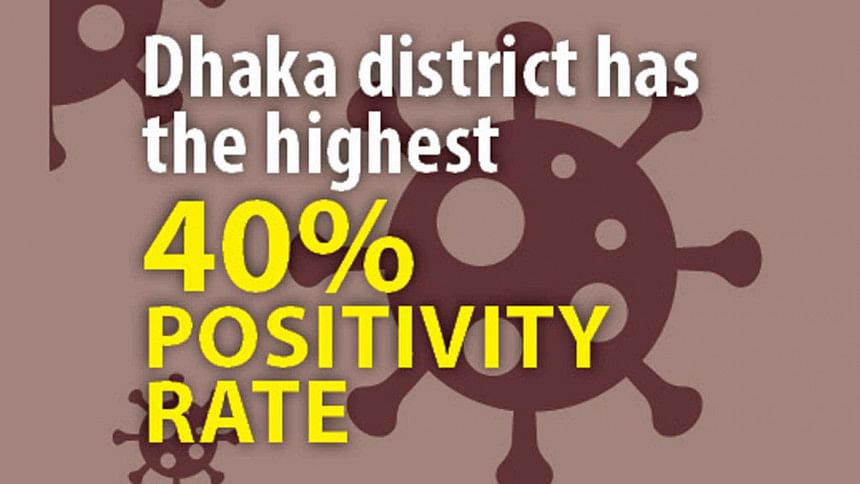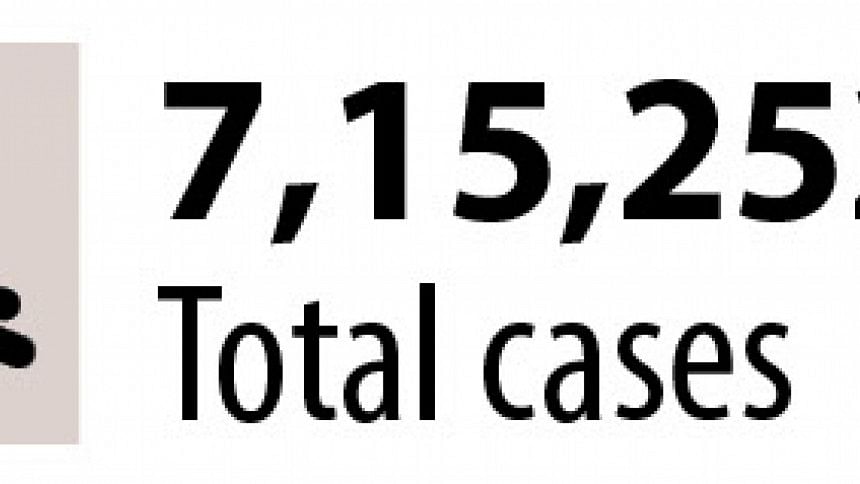54 districts now at high Covid risk

The rising coronavirus cases from April 6 to 13 have turned 54 districts of the country into high-risk zones.
Based on the previous week's (March 29-April 5) data, the IEDCR had labelled 31 districts as high-risk zones, meaning the number of high-risk districts has nearly doubled in eight days.
Of the current high-risk districts, 17 have positivity rates between 31 and 40 percent while 13 others have positivity rates between 21 and 30 percent.
Dhaka topped the list of 64 districts with nearly 40 percent positivity rate while Khagrachhari, Bandarban, and Panchagarh were placed at the bottom with positivity rates below five percent.
The country's worsening pandemic situation was reflected in the latest "Covid-19 Situation Analysis" by the Institute of Epidemiology, Disease Control and Research (IEDCR). This newspaper has obtained a copy of the report.
Speaking to The Daily Star, health officials yesterday said the report also took into consideration the tests of outbound passengers who were subject to mandatory Covid-19 testing. If they were excluded, the positivity rates would have been higher.
According to the IEDCR, districts with positivity rates of 10 percent and above are marked as high-risk zones while those with rates between 5 and 10 percent as medium-risk zones and the others with rates below five percent as low-risk zones.
The IEDCR analysis categorised Feni, Rangamati, Cumilla, Moulvibazar, Sunamganj, Satkhira, and Pabna districts as medium-risk zones.
Of the high-risk 54 districts, 13 have positivity rates between 21 and 30 percent.
The country witnessed a second wave of Covid-19 infections and deaths since the second week of March. The daily infection rate, which was hovering around 3 percent in January and February, crossed 5 percent-mark early last month.
The infection rate and deaths have continued to soar since then as the country posted grim milestones one after another in terms of infections and deaths.
This compelled the government to enforce countrywide restrictions on movement, initially for seven days from April 5, to curb the transmission. The restrictions were intensified from April 14 by closing all private and public offices. However, factories are allowed to run maintaining health guidelines.

"We are hopeful that the ongoing restrictions on movement will positively impact the transmission rate within next two to three weeks if the restrictions remain in force," Prof Tahmina Shirin, director of the IEDCR, told The Daily Star.
"Controlling the transmission depends on how carefully we adhere to the health safety guidelines. Wearing masks properly, washing hands frequently and maintaining physical distancing are key to stay safe. Right now, there is no other way to keep the transmission under control," she added.
101 MORE DIE
Meanwhile, the health directorate reported the all-time highest 101 Covid-19-related deaths for the second consecutive day yesterday, the 13th day of the ongoing lockdown.
With this, the death toll reached 10,182 with an overall fatality rate of 1.43 percent.
Among the total deaths, more than 58 percent were recorded in Dhaka division, followed by around 18 percent in Chattogram division.
Yesterday's 4,417 new cases took the number of total novel coronavirus cases in the country to 711,779. The overall infection rate now stands at 13.86 percent.


 For all latest news, follow The Daily Star's Google News channel.
For all latest news, follow The Daily Star's Google News channel. 



Comments